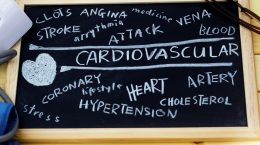Published on March 10, 2022
Here are some examples…
Key Points
- To make sure you and those around you are getting enough vitamin D to prevent deficiency, testing vitamin D levels is an essential step
- Examples of medical institutions and community wellness programs that have put such a vitamin D protocol into practice to get patient vitamin D levels to 40-60 ng/ml (100-150 nmol/L) include the Medical University of South Carolina (MUSC), for all prenatal patients, and the Pure North program in Canada
- North Dakota Nurses Association recently spotlighted the efforts of Beth Sanford in designing a vitamin D advocacy program for nurses and other health professionals; GrassrootsHealth is excited to be helping Beth on this project!
March (just after winter) is the time of year when vitamin D levels are at their lowest and the risk of deficiency is highest. Those who are not supplementing or using a UVB device are ate especially high risk for vitamin D deficiency. To make sure you and those around you are getting enough vitamin D to prevent deficiency, testing vitamin D levels is an essential step.
The short news clip below is an example of one doctor in Baltimore who tests all of her patients for vitamin D, and finds that most of them are low. Dr. Kathryn Boling recommends that all doctors should test vitamin D levels for their patients regularly – something GrassrootsHealth has been educating about since its founding.
What Results Could be Seen if All Doctors Implemented Routine Vitamin D Testing with a Goal of 40-60 ng/ml?
 Imagine the health benefits that could be achieved if all doctors implemented vitamin D testing, education, and supplementation to get their patients up to 40-60 ng/ml (100-150 nmol/L)! According to recent research by Dr. William Grant, “…given the multiple indications of significant health benefits from raising serum 25(OH)D concentrations above 30 or 40 ng/mL as well as the near absence of adverse effects, significant improvements in health at the individual and population levels could be achieved.”
Imagine the health benefits that could be achieved if all doctors implemented vitamin D testing, education, and supplementation to get their patients up to 40-60 ng/ml (100-150 nmol/L)! According to recent research by Dr. William Grant, “…given the multiple indications of significant health benefits from raising serum 25(OH)D concentrations above 30 or 40 ng/mL as well as the near absence of adverse effects, significant improvements in health at the individual and population levels could be achieved.”
Examples of medical institutions and community wellness programs that have put such a vitamin D protocol into practice include the Medical University of South Carolina (MUSC), for all prenatal patients, and the Pure North program in Canada.
One outcome tracked in the Pure North program was the incidence of hypothyroidism and autoimmune thyroid disease. Patients in the Pure North program experienced a 30% reduced risk of hypothyroidism, and a 32% reduced risk of elevated anti-thyroid antibodies with vitamin D levels of 50 ng/ml (125 nmol/L) or higher, as well as a significantly lower risk of reporting brain fog, low mood, unrefreshing sleep, weight gain, or low energy (symptoms of low thyroid function).
Meanwhile, MUSC’s pregnant population received routine vitamin D testing at their first prenatal visit. A vast majority of the women (89%) had vitamin D levels less than 40 ng/ml (100 nmol/L) on their first vitamin D test and almost one-third (31%) had vitamin D levels less than 20 ng/ml (50 nmol/L). Black women had particularly low vitamin D levels; almost all (99%) were less than 40 ng/ml and approximately two-thirds (65%) were less than 20 ng/ml. Those who achieved a vitamin D level at or above 40 ng/ml closest to delivery had a 49% lower rate of preterm birth compared to those with vitamin D levels less than 20 ng/ml. These results prove that incorporating a simple vitamin D protocol can make a BIG difference in health outcomes!
Additional examples of the effects of vitamin D level on disease risk can be seen in our Disease Incidence Prevention Charts for both general health and pregnancy and childhood. These charts, based on published research, illustrate the decrease in incidence seen for diseases such as multiple types of cancers, diabetes, multiple sclerosis, preterm birth, postpartum depression, and other diseases in pregnancy and childhood.
Taking Action to Move Vitamin D into Practice: North Dakota Nurses Association Spotlight
Below is an update from the North Dakota Nurses Association, acknowledging Beth Sanford for her work in creating a vitamin D advocacy program for all health care professionals. GrassrootsHealth is excited to be working with Beth on this project!


Measure Vitamin D Levels at Home with GrassrootsHealth
You can implement your own vitamin D program, for you, your family and friends! Test at home as a participant of the D*action project, learn about vitamin D, its co-nutrients, and how to achieve your target level, calculate a dose of vitamin D to get to your goal, utilize supplements and sunshine to get you there, and repeat until you have found what works.
 Having and maintaining healthy vitamin D levels and other nutrient levels can help improve your health now and for your future. Choose which additional nutrients to measure, such as your omega-3s and essential minerals including magnesium and zinc, by creating your custom home test kit today. Take steps to improve the status of each of these measurements to benefit your overall health. With measurement you can then determine how much is needed and steps to achieve your goals. You can also track your own intakes, symptoms and results to see what works best for YOU.
Having and maintaining healthy vitamin D levels and other nutrient levels can help improve your health now and for your future. Choose which additional nutrients to measure, such as your omega-3s and essential minerals including magnesium and zinc, by creating your custom home test kit today. Take steps to improve the status of each of these measurements to benefit your overall health. With measurement you can then determine how much is needed and steps to achieve your goals. You can also track your own intakes, symptoms and results to see what works best for YOU.
Enroll in D*action and Test Your Levels Today!





